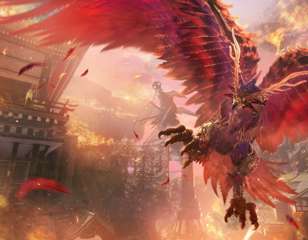Wild Hearts review: "Understands the assignment"
Wild Hearts is a great new entry to a genre that had started to feel a bit safe. Find out why in our Wild Hearts review.
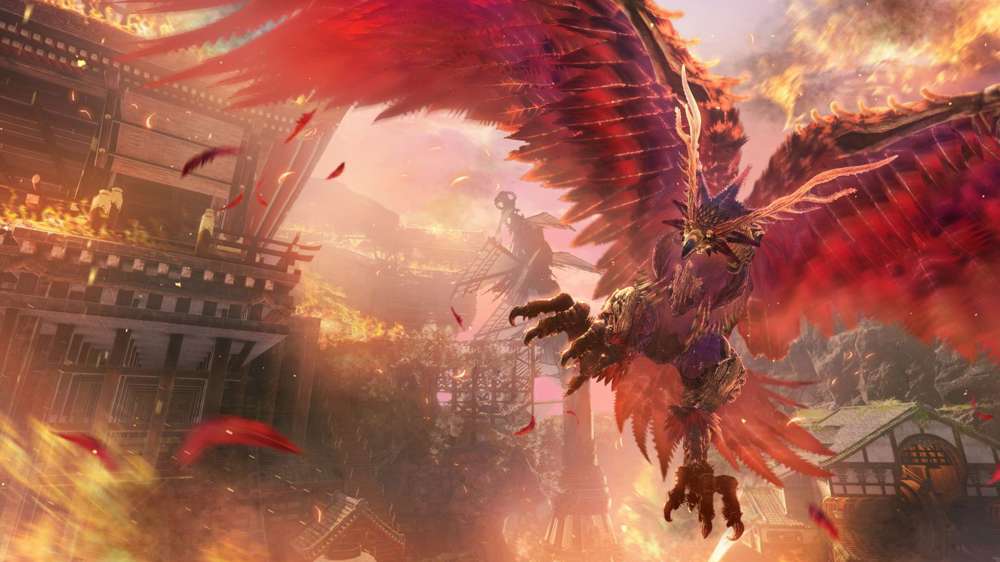
We may only be in February, but Wild Hearts is likely to be one of 2023’s biggest surprises. That’s high praise out of the gate and runs the risk of hyperbole at this point in the release calendar, but after spending a few dozen hours hunting its stunningly-realised Kemono through its striking biomes, it’s clear Omega Force has built something special.
Naturally, comparisons will be drawn to arguably the most mainstream (and successful) PvE hunting game, Monster Hunter, but Wild Hearts does plenty of work with its fantastic Karakuri crafting system to stand on its own hind legs and challenge the competition to a throwdown in the nearest mountain range, grassy plain, or ocean-lapped island.
Nature of the beast

It’s almost impossible to talk about Wild Hearts without highlighting the comparisons to Monster Hunter, a franchise that itself received a mainstream breakthrough with 2018’s Monster Hunter World – and it’s that title in the long-running franchise that Wild Hearts shares the most DNA with.
The core setup will be instantly familiar to anyone that’s spent time with Monster Hunter, and in its earliest stages I feared that Wild Hearts would struggle to stand out; players hunt monsters, carve their materials to make more powerful weapons and armour, and go on to hunt bigger and usually more difficult monsters. It’s a well-worn gameplay loop that relies on engaging combat and a steady drip-feed of upgrades to keep players on the hunt – both for monsters and for the “carrot on a stick” of a sword with new elemental properties, for example.
Perhaps to be expected from the developer behind the underrated Toukiden series (itself a more folklore-infused Monster Hunter descendant), Omega Force understands the assignment but goes beyond simply making what came before shinier and worthy of a next-gen console.
Crafty one
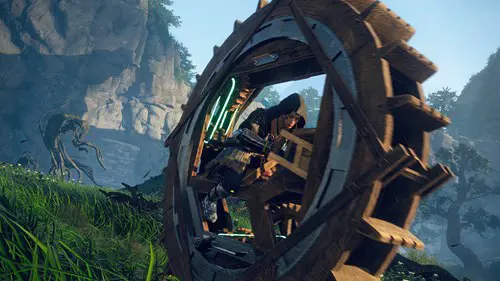
As we noted in our preview of the game’s first few hours, a big part of what makes Wild Hearts so special is its Karakuri system. Karakuri is an in-universe term to describe magically-infused technology that’s anachronistic in the game’s feudal setting of Azuma, with players able to craft items seemingly from thin air.
Managed with a series of menus mapped to a bumper button, the idea of crafting boxes to leap from and huge hammer traps seems like a nightmare when tackling your fearsome Kemono foes, but it’s impressively flexible – holding the bumper and pressing a button can build a small crate to leap from, but building half a dozen will instantly construct a Bulwark to stop rampaging Kemono in the tracks.
Playing Wild Hearts like a Monster Hunter game will end in disaster in all but the simplest hunts, and it’s a game that challenges you to learn, practice, and learn again until you get it right.
Once you’ve built Karakuri, they persist whenever you return to one of the game’s gorgeous biomes, reducing the tedium of having to rebuild again and again. One Karakuri, the Flying Vine, lets players zip line upwards or downwards to reach new areas, but once it’s built, can be used by you or any other hunter that joins your game – unless a Kemono knocks it down.
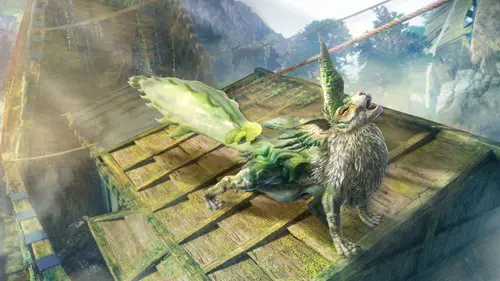
That extends to making camp in multiple areas of the map, acting as fast travel points throughout Azuma. While I was frustrated after being knocked out by a Kemono and sent across the map, I only had myself to blame, and setting up for a big hunt by prepping camps, finding food, and setting up the aforementioned Flying Vine can ensure no time is wasted, which can be crucial on higher difficulties.
Another advantage of the system is being able to return to camp to upgrade gear and armour or switch to alternate weapons. While many games in the genre (including Monster Hunter, the Rathalos in the room), insist on sending players back to a social space/trading post between hunts, Wild Hearts gleefully suggests you go on another.
It doesn’t hurt that Azuma is gorgeous, with seasonal biomes that run from coral-covered cliffs to mountain plateaus, and plenty more. Grass flows in the breeze, Kemono topple trees and leave craters, and make their influence felt on the environment in other ways, too.
Making a monster
Kemono, Wild Hearts' giant beasts that players are tasked with hunting, are each intricately designed. Deriving huge bosses from real animals like rats, squirrels or apes may not sound all that threatening, but each is mutated by nature in a unique way. The Lavaback, for example, is a hulking, gorilla-inspired animal that throws magma, rocks, and its own body at players, while the Ragetail is a huge rodent with flora and fauna growing from it.
The Karakuri are key here because certain types are specifically suited to specific Kemono. Take the Spineglider, for example, an ice-infused squirrel that perches itself on frozen ice statues it creates. While there, it’s hard to reach with melee attacks, but crafting the Pounder Karakuri (a hilariously oversized, Looney Toons-esque hammer) will shatter the ice and send it tumbling for a follow-up attack.
That means your first encounter with any Kemono becomes a process of feeling out your opponent like boxers trading jabs before springing into action when the corresponding opening is telegraphed.
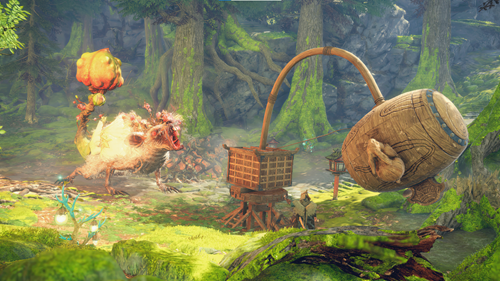
Aside from that puzzle element, each weapon is varied enough to feel unique. I gravitated toward the Katana, the game’s initial weapon, and enjoyed the speed at which it allowed attacks to be chained together, all while staying on the move and slipping away from a monster’s clutches.
If there’s one supersized flying Kemono in the ointment, though, it’s Wild Hearts' environmental geometry. As good-looking as Azuma is, more than once I found myself getting caught behind a tree root, or a rock, or something else, causing the camera to struggle to follow the action.
The game’s lock-on does a great job of handling things most of the time, but being pinned in the corner when a Kemono can kill you in a hit or two can lead to some cheap deaths. On the plus side, learning Kemono routines and retreat plans can help alleviate some of this by making it easier to prepare. For example, the Ragetail will often take shelter within a half-collapsed building, and knowing where the camera’s pain points are can be a huge boon.
Better together
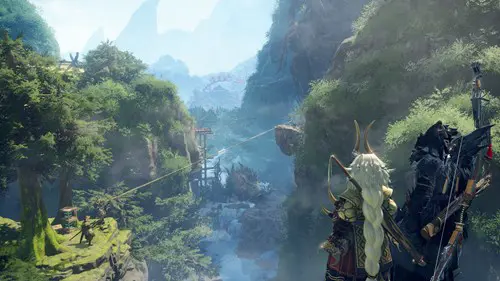
As with its genre contemporaries, Wild Hearts is just flat-out better with friends. Tackling Kemono with multiple weapon types, and up to three players crafting Karakuri in unison, feels very cool, and you’ll want the backup too – Wild Hearts can be particularly difficult at points.
While much of the game is paced well, there are a couple of difficulty spikes that require sharp thinking and sharper reflexes. Still, it nails that Souls-like satisfaction of felling a huge, previously seemingly impossible foe, only here it’s coupled with a stylish black and white finishing move as you run your prey through with your chosen weapon.
The Verdict - 4.5/5
Minor camera issues aside, Wild Hearts is a stunning action RPG that offers more than enough of a base to build a franchise on top of. Its fantastic creature design and lush landscapes make every hunt feel fresh, and its Karakuri system allows each biome to feel more personal with each trip.
If you have any interest at all in the core loop of a PvE hunting game, Wild Hearts is well worth playing.
Reviewed on Xbox Series X. Code provided by the publisher.
Comments

